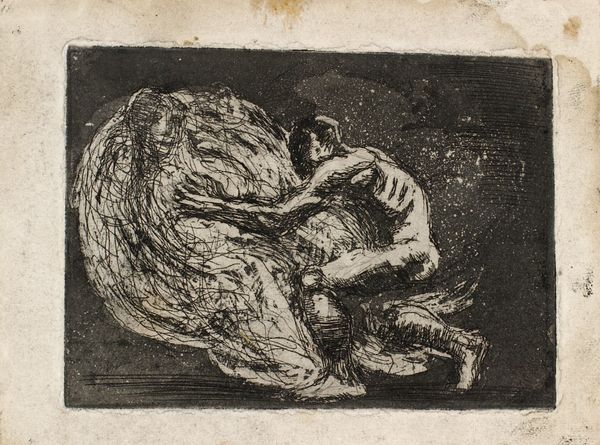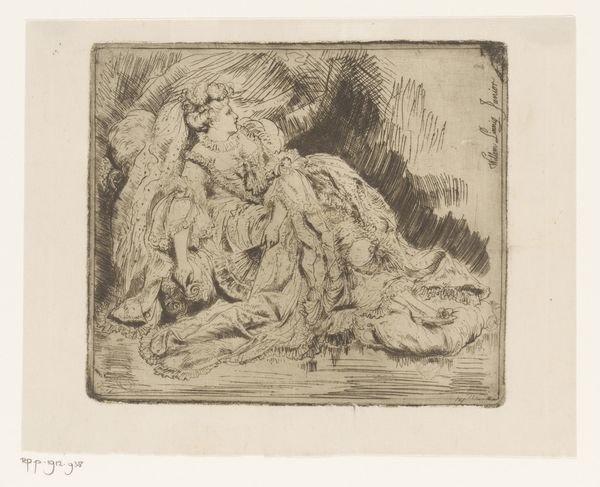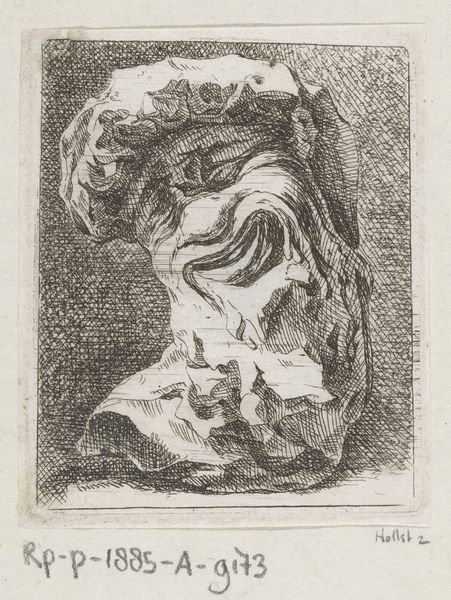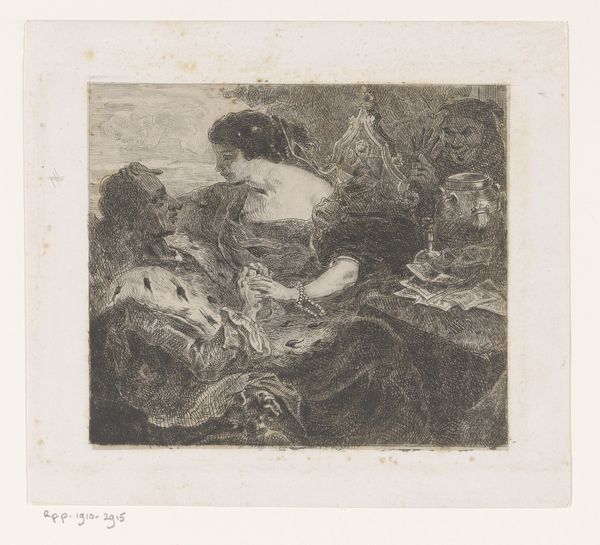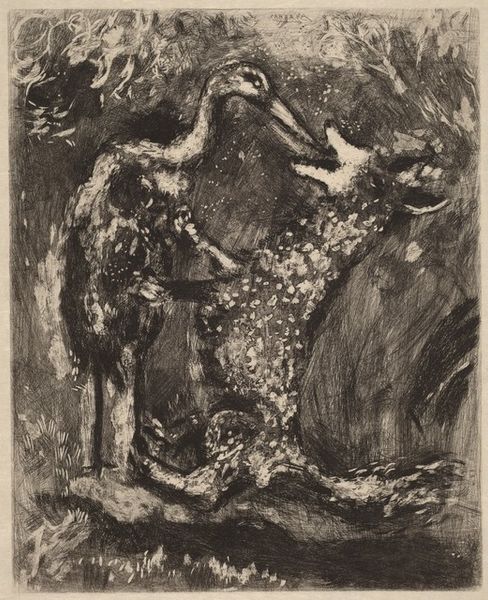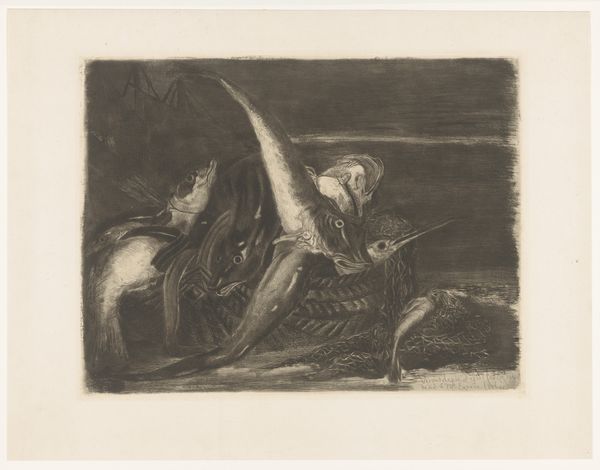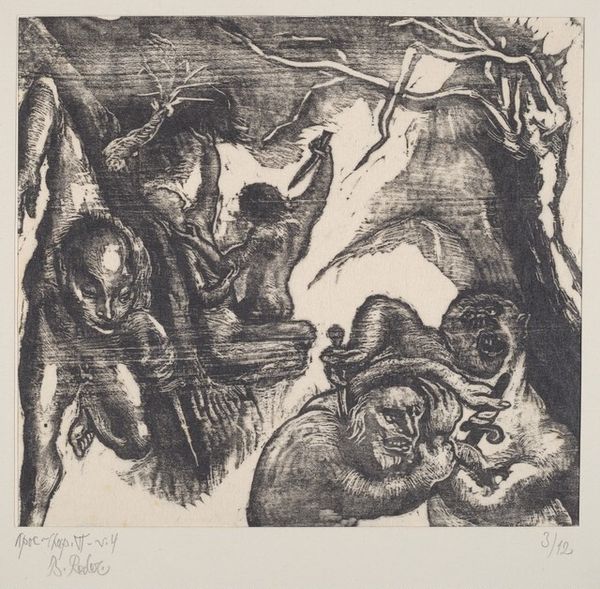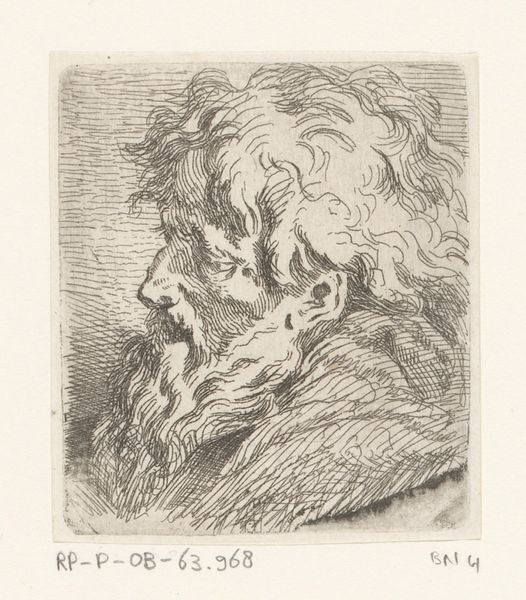
drawing, print, etching
#
drawing
#
baroque
# print
#
etching
#
woodcut effect
#
etching
#
history-painting
Dimensions: height 67 mm, width 53 mm
Copyright: Rijks Museum: Open Domain
Curator: Ah, the Rijksmuseum. Standing here, we can consider this striking print titled “Gebeeldhouwde lachende mannenkop,” or “Sculpted Laughing Male Head,” crafted around 1626. Its creator is Johann Heinrich Schönfeld, and it's primarily an etching, offering a woodcut-like effect, almost sculptural itself! Editor: My first impression? Mischief! It feels like a sly grin captured in stone. Look at the rough texture, that haphazard crosshatching—there's an energy there, a raw vitality bursting from something seemingly immobile. Makes you wonder what he’s chuckling about. Curator: It's Baroque, so the drama is deliberate. Etchings like these were often reproduced, democratizing access to imagery during the period. Prints allowed artists like Schönfeld to circulate their ideas widely, impacting how art and sculpture were perceived and discussed in society. Editor: Democratizing smiles! I love that. This chap looks almost defiant, doesn't he? There's a rebellious spirit hiding in that chiseled jawline. Maybe he’s laughing at the establishment itself! Or the sheer ridiculousness of posing for so long...I bet the artist snuck in a few extra jokes to amuse him! Curator: While delightful to imagine such artistic freedom, we should acknowledge how complex the networks of patronage and social pressures would influence such subject matter, so easily categorized under 'history painting' as an element in grander compositions. Editor: Maybe, but he still exudes pure joy! That's a powerful message to send even within very tight political constraints. Even now it jumps out at you—the freedom of expression, the humanity shining through layers of art and history and context. I wonder, could Schönfeld feel what it was to be truly, unboundedly, happy? Curator: Regardless of our differing readings, what we can glean is its significant circulation during a formative era for visual communication in Europe. Thank you for sharing this space with me, with art history, and particularly with this laughing gentleman. Editor: Thanks! A bit of subversive Renaissance art really brightens the day, doesn’t it? I’m taking that cackle with me.
Comments
No comments
Be the first to comment and join the conversation on the ultimate creative platform.
